Sunday 2nd to Thursday 13th June 2019
After three nights in the marina at Airlie Beach we headed north again on a cold, overcast day for the 120 mile, overnight sail to Magnetic Island.
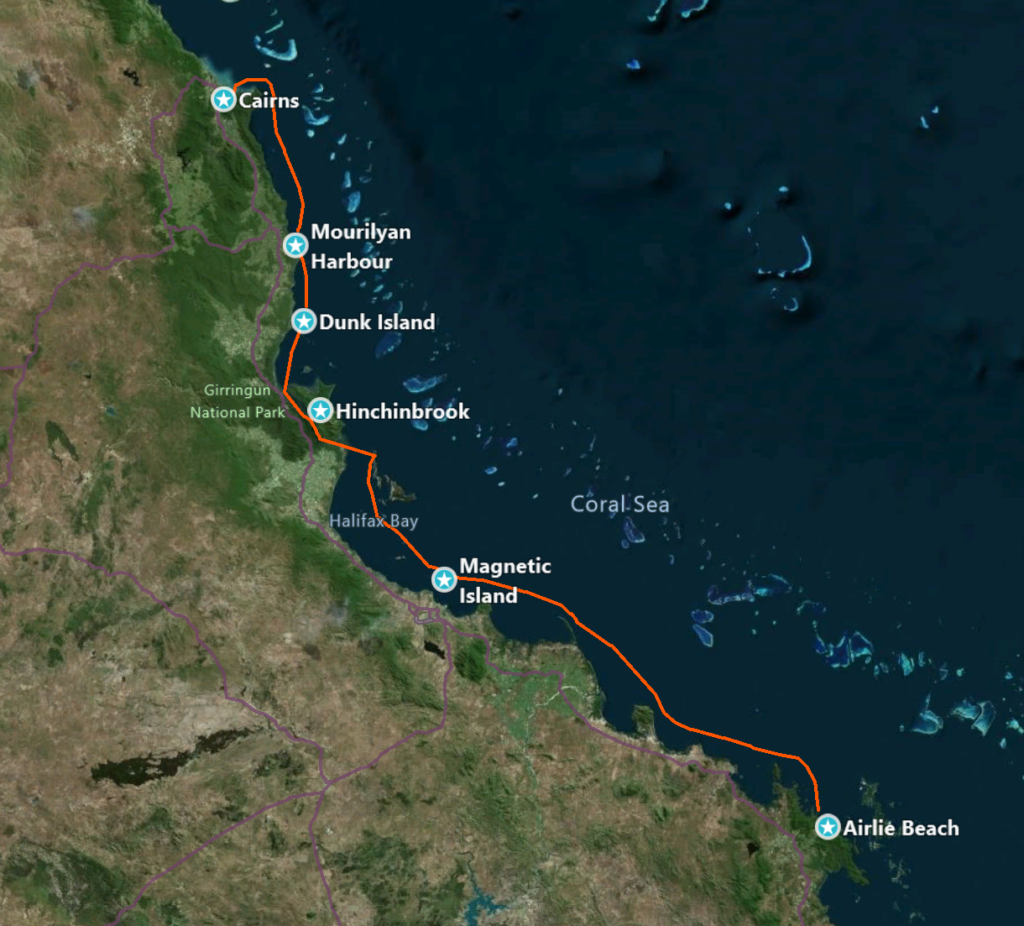
Initially it was a very leisurely, relaxing sail under just the genoa in 8 to 10 knots of wind from astern. It had increased to around 16 knots by early afternoon as we reached the top of Gloucester Island (named, of course, by Captain Cook), a national park covered in dense rainforest, high, remote and brooding, and eased as it started to get dark and we approached Abbot Bay. Here eight large cargo ships were at anchor waiting to dock at Abbot Point Wharf where a 3km long conveyor brings coal out to the wharf to be loaded onto ships. Australia exports massive amounts of coal to China, coal being its top earner in terms of exports and Australia being the world’s top coal exporter. It defends its right to do so despite the contribution that burning fossil fuels is making to climate change and the need to develop renewable energy sources. The site here is controversial too, so near to the Great Barrier Reef, with concerns that the reef and its animal life may be harmed by the ships transporting coal as they transit the reef, to and from the port. Greenpeace has campaigned against the coal industry in Queensland and expansion of the Abbot Point Coal Terminal which will increase global warming and damage local habitats and possibly the Great Barrier Reef.
As we neared the ships at anchor, one huge vessel started moving off the anchorage and towards the coal wharf and us, so Hugh called it up on VHF to ensure it was aware of our little sailing boat in the dark night.
One the whole I dislike overnight sails as I find it hard to sleep when not on watch and it takes my body a few days to adjust; it is exhausting and can be rather boring on night watch, occasionally nerve wracking. However we felt the need to catch up on our sailing schedule and make some headway north as the Sail2Indonesia rally is leaving from Thursday Island at the very top of Australia on July 15th. Another reason not to sail at night, as someone pointed out to me, is that humpback whales migrate from Antarctica to these waters from May to September each year to calve and we had no wish to hit a sleeping humpback whale in the dark…. it does happen. Anyway this particular 120 mile overnight sail passed uneventfully as we headed up the coast under the headsail and with the trusty Hydrovane doing all the work steering.
Overnight the wind had gradually increased again and as we approached Magnetic Island the local weather forecasts were predicting up to 30 knots, so we decided to stop for the night in the small marina at Nelly Bay. Captain Cook passed the island when sailing up the east coast of Australia in 1770 and named it because of the magnetic effect it appeared to have on his ship’s compass, although since then no one has been able to replicate this effect nor discover what might have caused it.
There is a frequent ferry connecting Maggie Island to Townsville on the mainland which we caught over and spent the afternoon wandering around. The city developed rapidly when gold was discovered in the surrounding area in the 1870s, becoming a major port and supply centre for northern Australia and the rich sugar growing districts here. The old part of the city around Flinders Street feels rather shabby and down at heel despite many of the late 19th century buildings having been renovated, an area of charity shops and backpackers hostels.
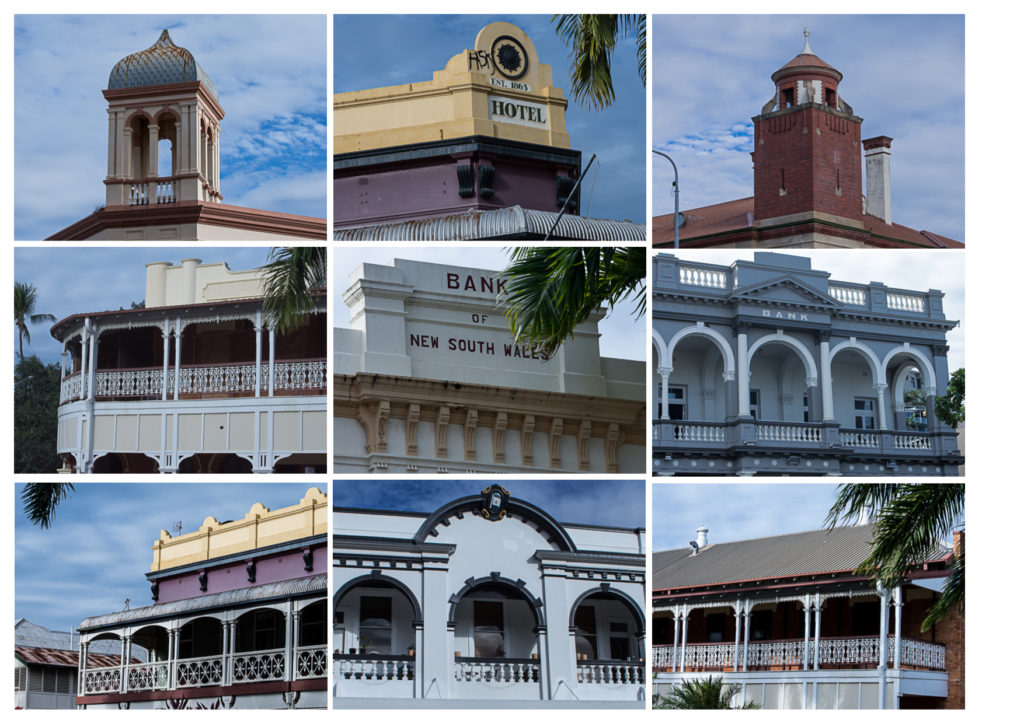
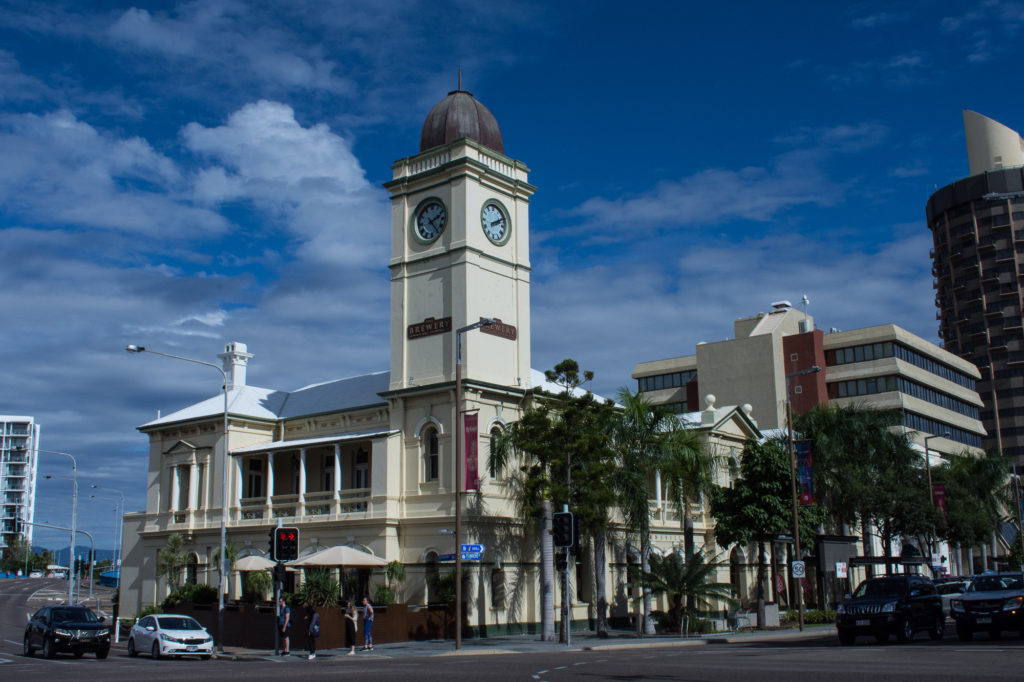
The Strand is the beachfront promenade with swimming pools and a water park where Townsville comes to relax, stroll, jog, rollerblade, bike, swim, play, fish, eat and drink. We did some strolling then headed to the Botanic Gardens with views up to Castle Hill a ‘red rock monolith’ before returning past the Townsville marina to get the ferry back to Magnetic Island.
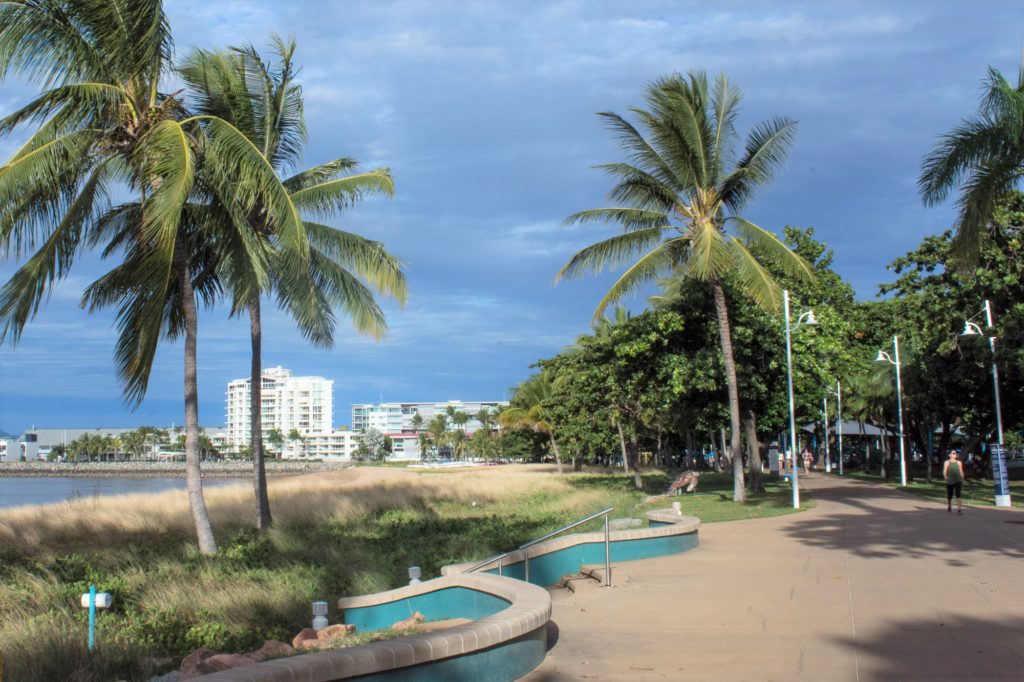
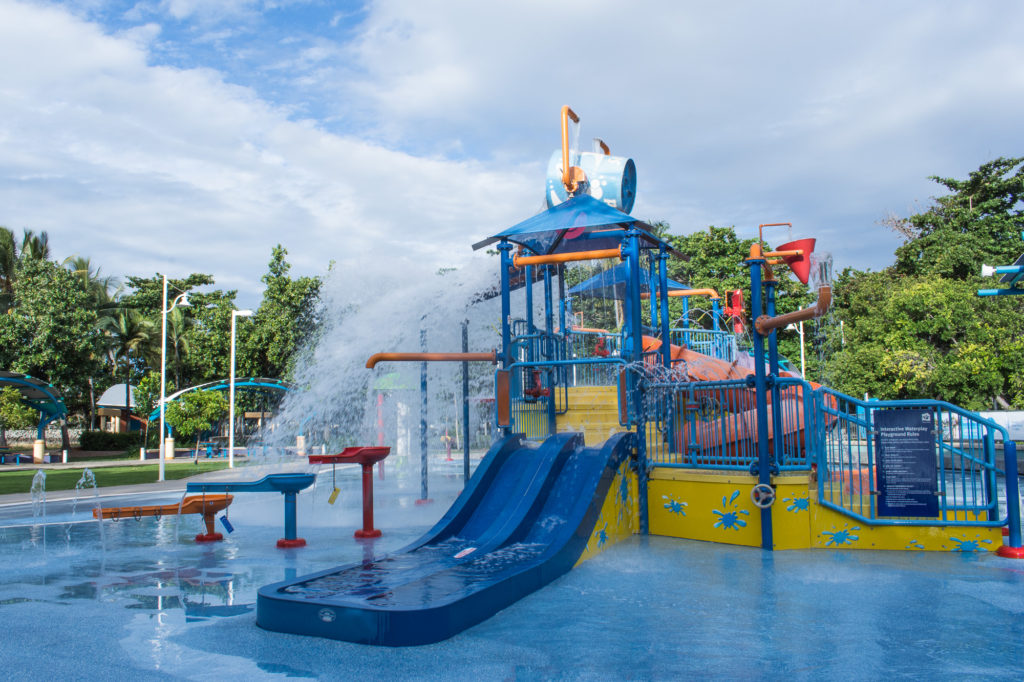
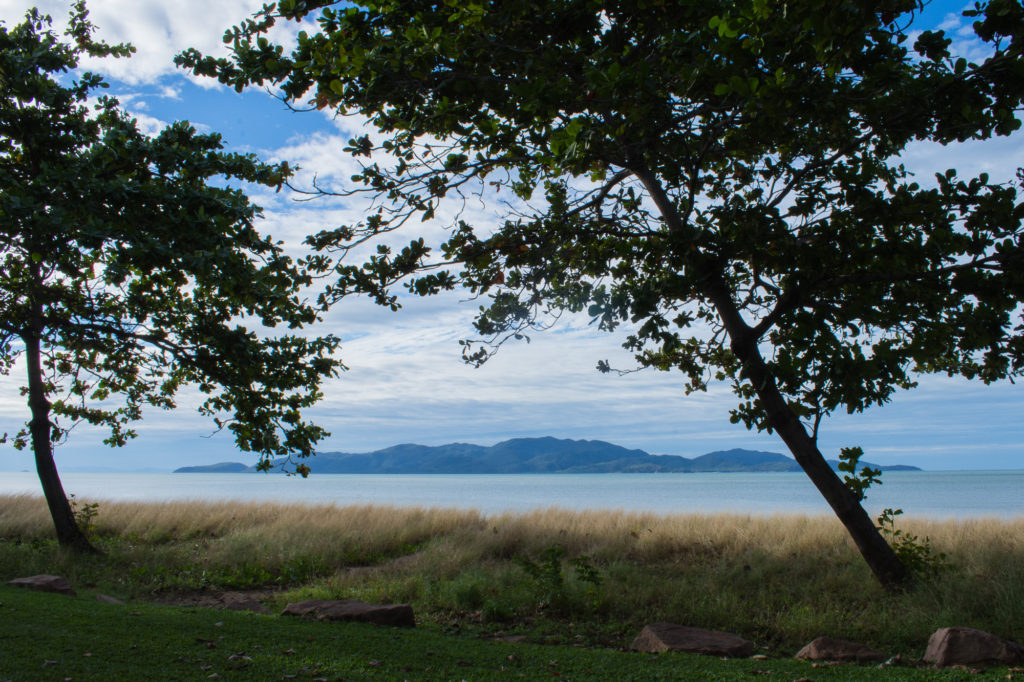
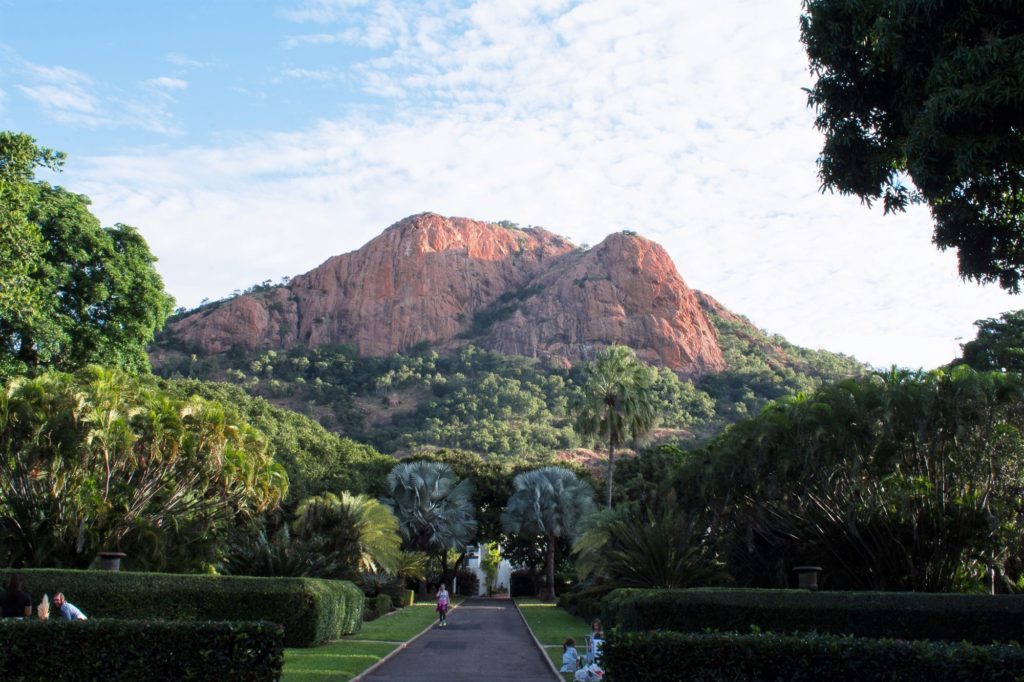
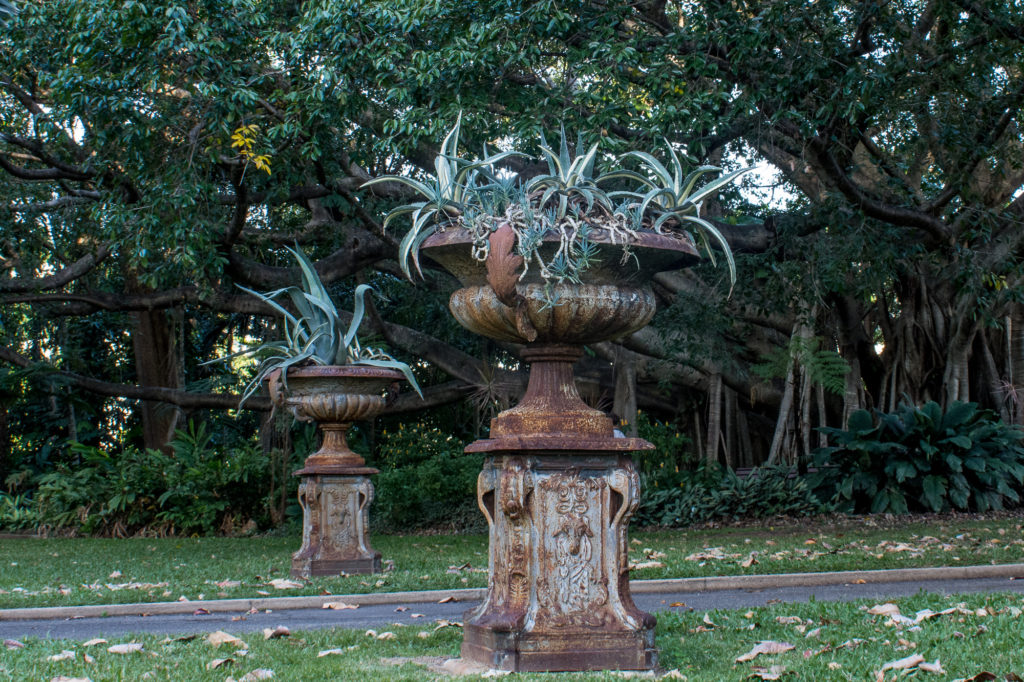
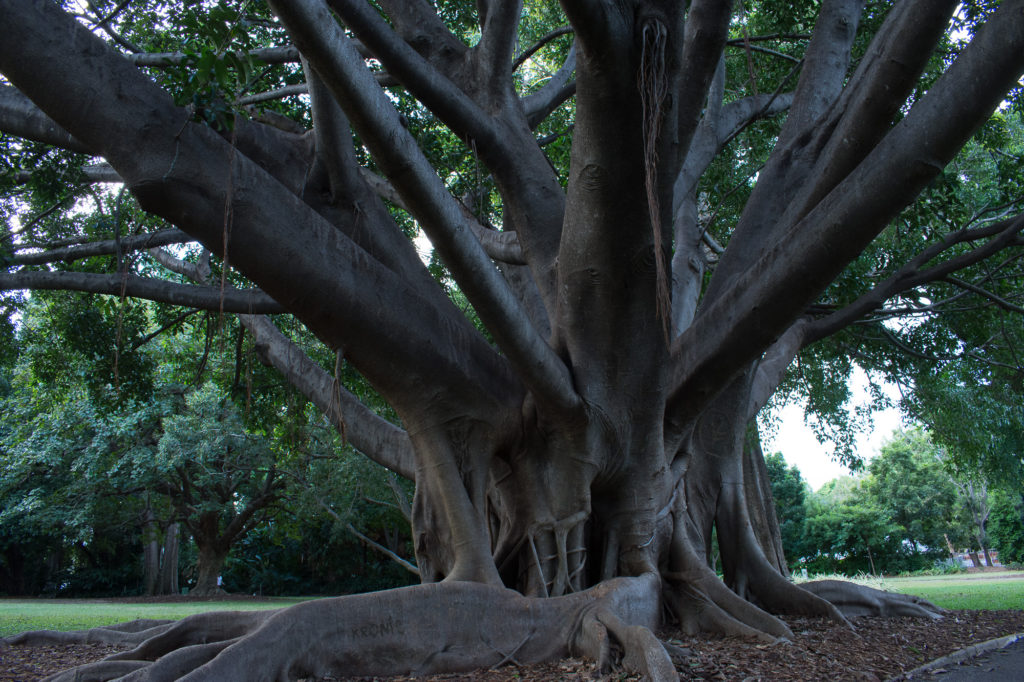
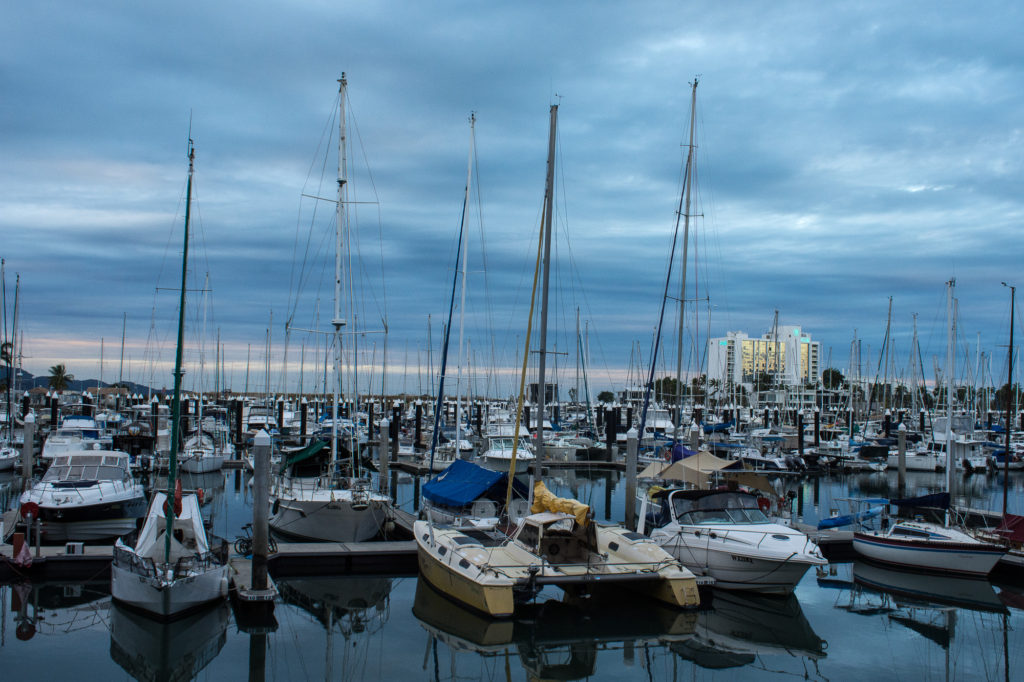
On Magnetic Island it was easy to catch the bus across the island to the start of the Fort Walk, along with lots of other tourists over on the ferry. The main attraction of this walk is not the concrete WWII bunkers at the top of the hill but the koalas you hope to see perched up in the gum trees along the way. We were lucky and saw two although both were sound asleep. Some young guys pushed their GoPro up on a pole to film one close up, at which point it woke up for a bit and looked sleepily around.
We did also continue up the path to the concrete bunkers, well camouflaged amidst the huge granite boulders which form part of the landscape here. They were built during WWII as part of the defence of Townsville from possible Japanese invasion, with 360 degree views of the sea approaches and of the island and bays below.
On the way down I was thrilled to see a group of rock wallabies at dusk, although they hopped off before I could get very near. We could have visited the Koala Sanctuary and had breakfast with the koalas and have got to cuddle one, as well as having an up close and personal experience with a snake and a croc, but decided we were happy with seeing the two wild koalas.
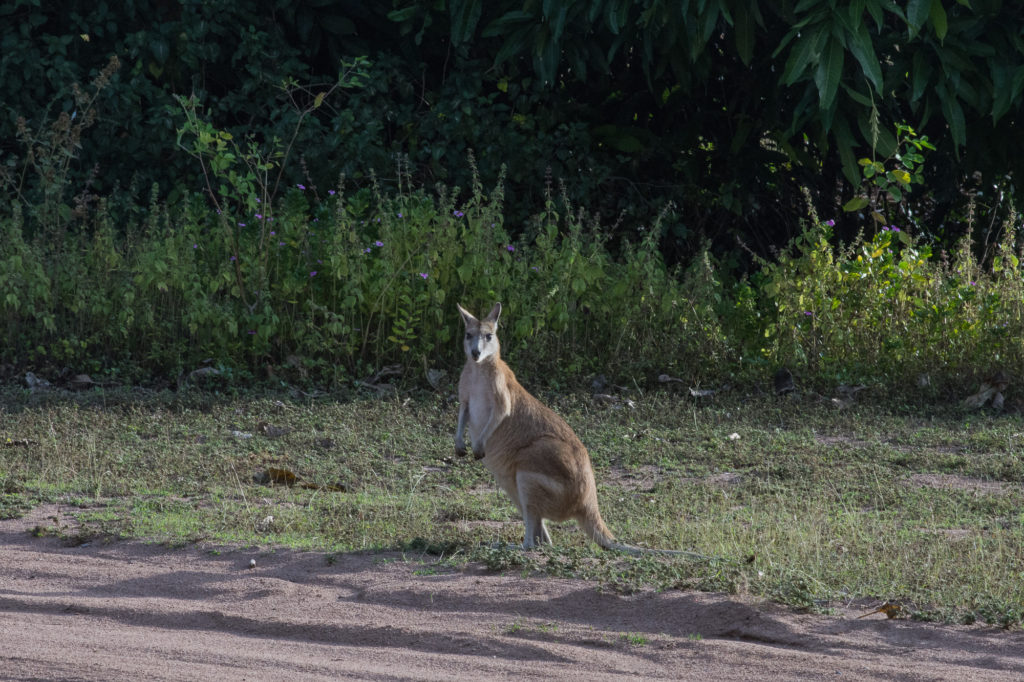
From the marina we moved on to anchor at the north of Magnetic island in Horseshoe Bay, a sheltered and calm anchorage where I counted another 24 yachts as well as a few fishing boats.
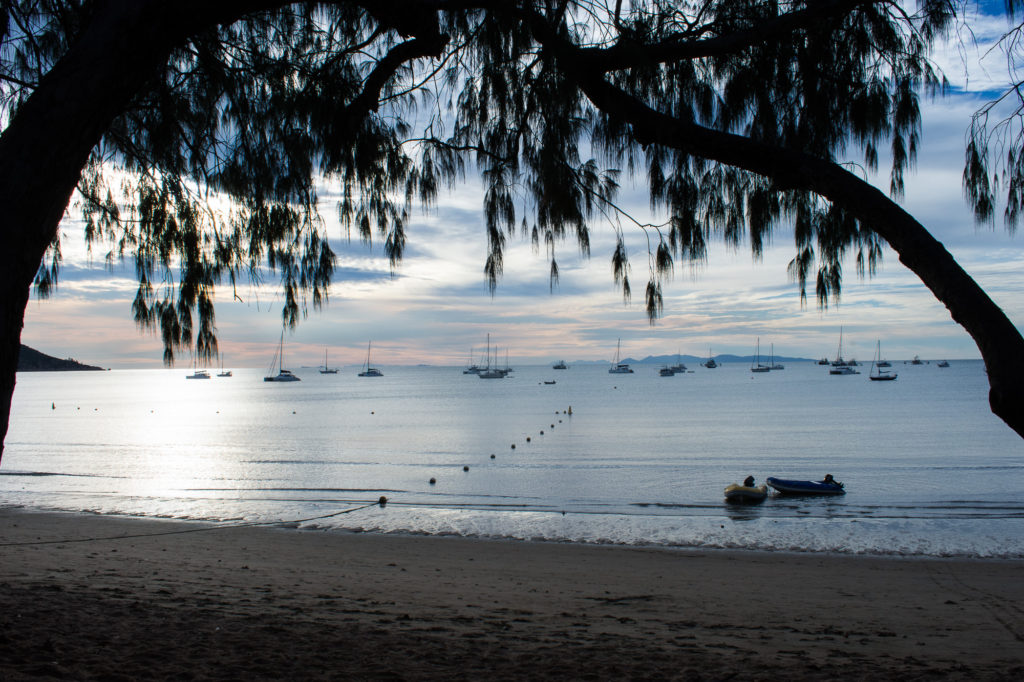
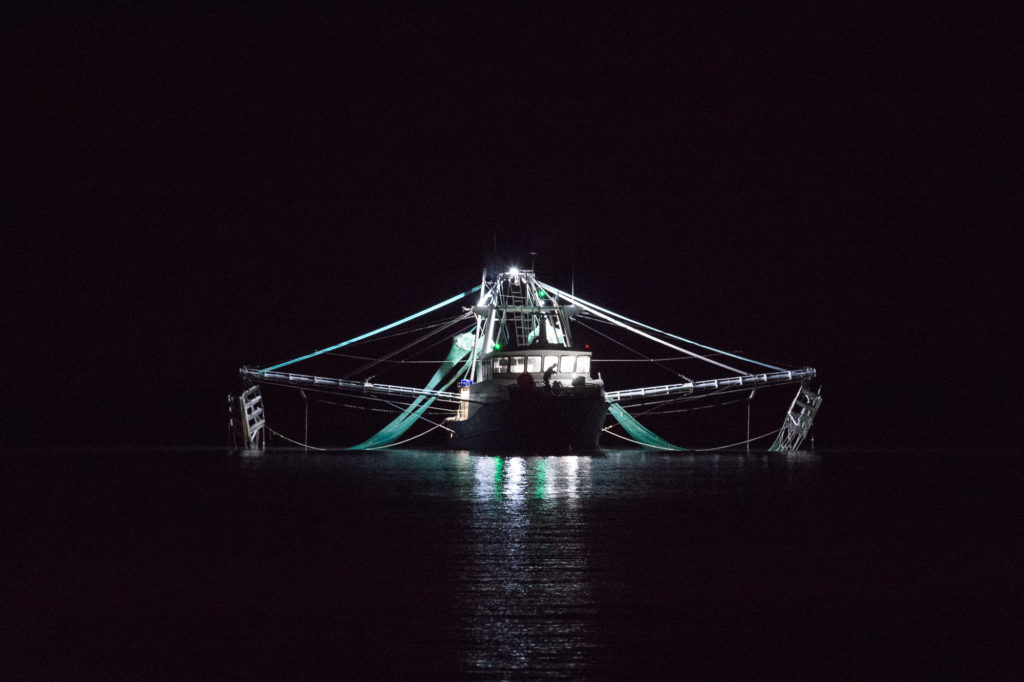
The next bay along, Balding Bay, turned out to be especially for sun worshipers but by the time we walked over, passing a very large, extremely bronzed, middle-age man who was just leaving, it was thankfully deserted, apart from a sea eagle flying overhead. I had a wonderful, refreshing swim but stayed in shallow water as I didn’t fancy being supper for some shark.
We loved Magnetic Island… beautiful, relaxing, a popular but not overdeveloped holiday place. The traditional owners of Magnetic Island, the Wulgurukaba people – the ‘canoe people’ who lived on the island for thousands of years, call it Yunbenun and I read that some 10% of the land on the island has recently been returned to them. Having been finally forced off the island in the 1920s to live in missions on the mainland after decades of confrontation with European settlers, a small group of Wulgurukaba people have apparently returned to live here.
From Magnetic Island we continued on north. I had hoped that we could anchor by Great Palm Island as it is an Aboriginal Settlement. You need to ask permission from the elders there to visit and I would have liked to find out more about their lives. Few yachts seem to stop here although it is possible to do a day trip and guided tour from Townsville in a fast catamaran. As it was we decided it was too windy for such an exposed anchorage with worse weather forecast, and we were also feeling the time pressure to get on.
Instead of Great Palm we picked up a Government mooring buoy at the top of Orpheus Island where we spent a rather bumpy night in the bay, alone apart from one other yacht, Rubicon, with a Swedish couple and their daughter on board. Vega was built by Malo, a Swedish yacht building company, and Rubicon is only the second Malo that we’ve seen on our voyage, the first one being over three years ago in Spain. We had a chat with Johan and Lisa on the VHF radio and met them properly later in Cairns.
It is somehow hard to appreciate that it’s winter here in Australia despite the cold, rain and low lying cloud acting as reminders. We are glad that we’re heading north towards the equator and hopefully warmer weather. The duvets have come out at night and although shorts are still ok during the day a fleece is often needed as well.
The next morning we left Orpheus at 8.30am, the timing critical as we wanted to cross the shallow waters of Lucinda Bar into the Hinchinbrook Channel some 90 minutes before high tide, the point at which we were reasonably confident that there would be enough water under the keel to avoid going aground but at which, if we got it wrong and did go aground, the tide would still rise enough to allow us to hopefully float off. Here a 5.7 km jetty extends out from the mainland with a conveyor belt for moving sugar from the sugar sheds to load onto cargo ships waiting in deeper waters. A flashing white light on the jetty signalled the safe route towards it through the shallows (if the light turned green we were too far to the right, if red too far to the left). We watched the depths as we slowly motored for two miles over the bar and at the shallowest point there was still 90 cm of water under our keel. Phew.
Hinchinbrook Island and the 26 mile long channel between it and the mainland are isolated, peaceful and beautiful but heavy low-lying cloud, which occasionally parted to reveal tall mountain peaks, covered much of the land and mangrove forest prevents access to almost all of the shoreline. Much of Hinchinbrook Island is covered with dense rainforest although there is a four day walking trail from top to bottom. It rained, at times heavily, which made us reluctant to go ashore and risk getting stuck in the thick sticky mud that coated the anchor and chain when we raised it to move anchorage. The mosquitoes and salt water crocodiles that supposedly lurk in the mangroves also contributed to keeping us on the boat.
We left Hinchinbrook after two nights at anchor in the Channel and sailed on in the drizzle to Dunk Island where we picked up one of the two mooring buoys there. Dunk Island was named by Lieutenant Cook as he sailed past in 1770, after George Montague-Dunk, First Lord of the Admiralty, but its Aboriginal name is Coonanglebar. Most of the island is national park but there are also the ruins of what was once an extremely upmarket resort damaged by cyclone Larry in 2006 and then cyclone Yasi in 2011 and still lying derelict, on the market with an asking price of A$20 million. In the morning we went ashore to explore. No Entry signs forbade access to resort buildings although there were signs of people living there and the runway looked in good condition. A signposted walk led up Mount Kootaloo and on into the heart of the island, although we took the shorter path along the coast through some lovely rainforest to Muggy Muggy Beach.
The next stop, later that day, was at Mourilyan Harbour on the mainland, another terminal for sugar. We anchored on the edge of the swing basin after being reassured by a local boat that no big ships would be coming into the harbour as the sugar season hadn’t yet started. That night, after dark, a huge cargo vessel arrived and swung around within a few feet of Vega, before docking at the wharf.
We had phoned and spoken with Kerrie the day before to arrange for the school bus to pick us up nearby and take us into Innisfail, a small town about 10 miles away along the ‘Cassowary Coast’. At 7.50am, on cue, the bus pulled up and the jolly driver, Kev, welcomed us on board. Along the way he stopped frequently to collect school kids of a wide variety of backgrounds including European, Indigenous, Indian and Asian, to drop off at their schools. Innisfail’s attraction for us was the Art Deco buildings built during the 1920’s and 30s after a cyclone in 1918 destroyed almost all its buildings. We did a tour of the Shire Hall with guide Kim, a splendid building that has been burnt down and rebuilt three times over the years and most recently was renovated after being damaged in 2006 by cyclone Larry. The wooden floor in the large hall is from New Guinea rainforest since Australian rainforest is now protected (we were somewhat dubious about the ethics of this). The floor tiles in the lobby were hand painted and damaged cream tiles on the wall had been replaced with identical tiles sourced from the original source, a U.K. factory, at $30 a tile.
Kim told us that much of the population of Innisfail were descendants of Italian and Greek immigrants in the 1920s but more recently there have been Hmong from Laos, resettled worldwide after being allies of the US in the Vietnam War, some of whom are still fearful of retribution by the Vietcong. Also a large number of Sikh families (who, according to her, become dentists).
We did a self-guided tour of the Art Deco buildings in the town, with examples of Italian, French, Spanish, Moroccan and Anglo-Saxon ArtDeco facades reflecting the population mix in Innisfail.
The cathedral was built in the 1920s by the Italian community…..
The Lit Sing Gung Temple is an art deco temple for those foll0wing Taoist, Confucian and Buddhist spiritual practices:
The Art Deco Innisfail Water Tower has sprouted a large collection of aerials:
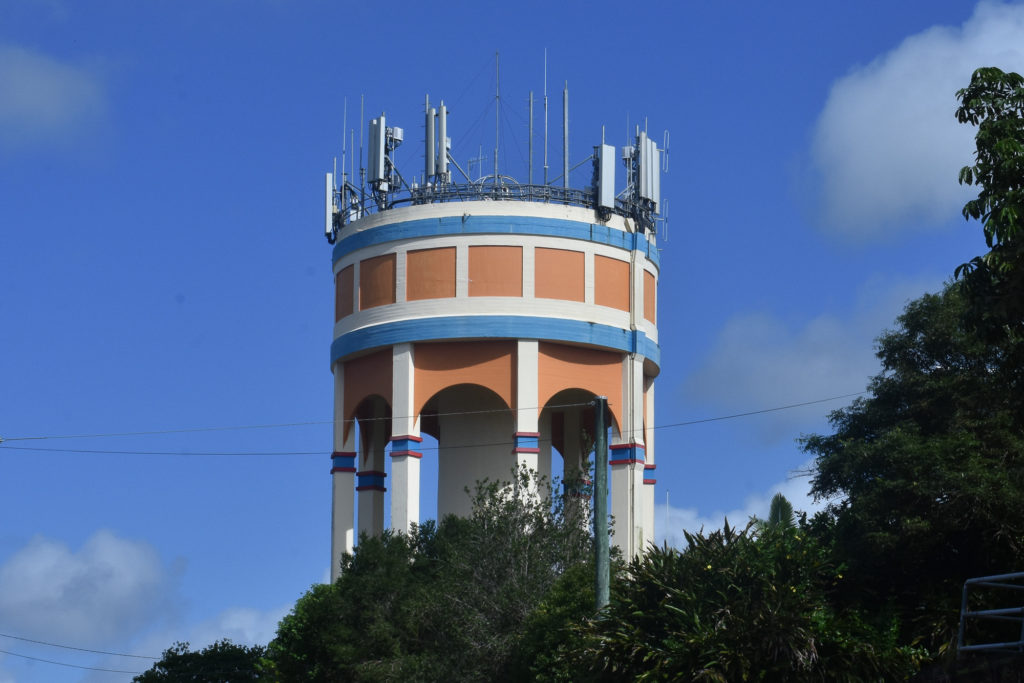
Kev had arranged to collect us at 3.30pm on the return run of the school bus, which was already packed with chattering, excited, noisy, boisterous children, nothing like the subdued ones we’d come across in the morning. The drive back was again through tall fields of sugarcane, ready to be harvested.
The children were gradually dropped near their homes on the way back until we were the only passengers left. Kev kept a close lookout for cassowaries along the way until he spotted a family of them by a group of bungalows along the road and stopped the bus so we could get out and take photos.
The Cassowary is the nearest living descendant of the dinosaur and the largest bird in Australia, up to 2 metres tall. There used to be flightless birds twice the size of ostriches here, and other megafauna which became extinct within a few thousand years of the arrival of humans in Australia some 45,000 years ago. After mating the female lays a clutch of 3 to 5 eggs and, her job done, leaves the male to tend the nest and to rear the young whilst she heads off to find a new mate. The casque (helmet) on the Cassowary‘s head is made of keratin and may help detect frequency vibrations across long distances, a technique also thought to be used by some dinosaurs.
They are capable of delivering a powerful kick so I was rather alarmed when the adult male and his three youngsters headed towards me. At this point a young man came out of one of the houses and they started following him around. A relief!
In the night the large cargo ship left and at 4am an even larger one arrived, swinging around 180 degrees right past us.
And so on towards Cairns, with an overnight stop at Fitzroy Island, a resort island popular with day trippers from Cairns, the next morning a short sail round to the marina in Cairns.
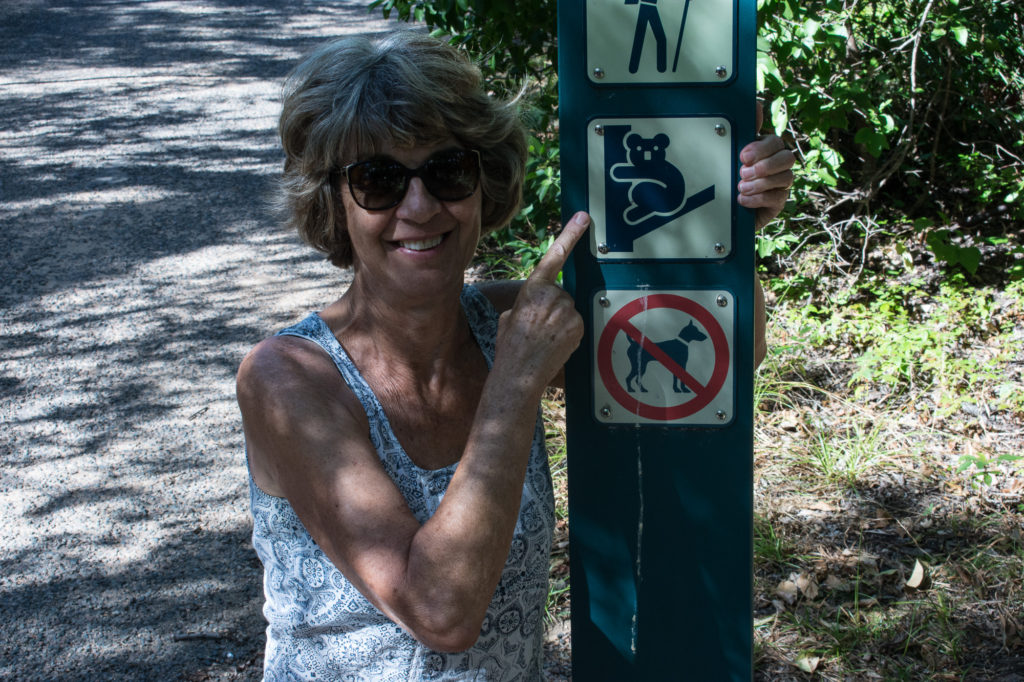
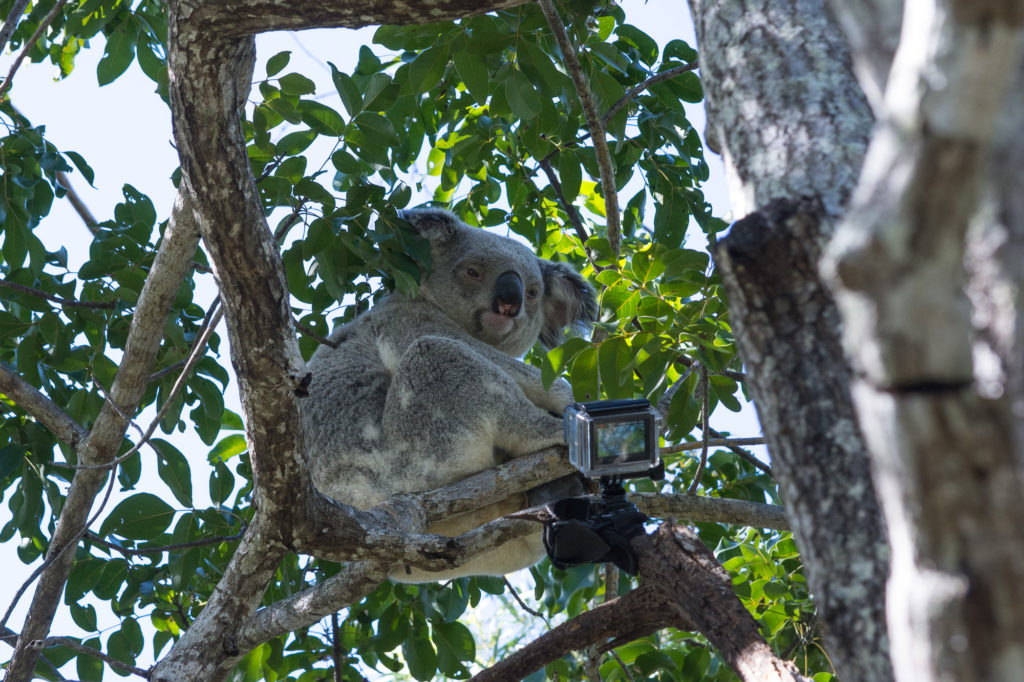
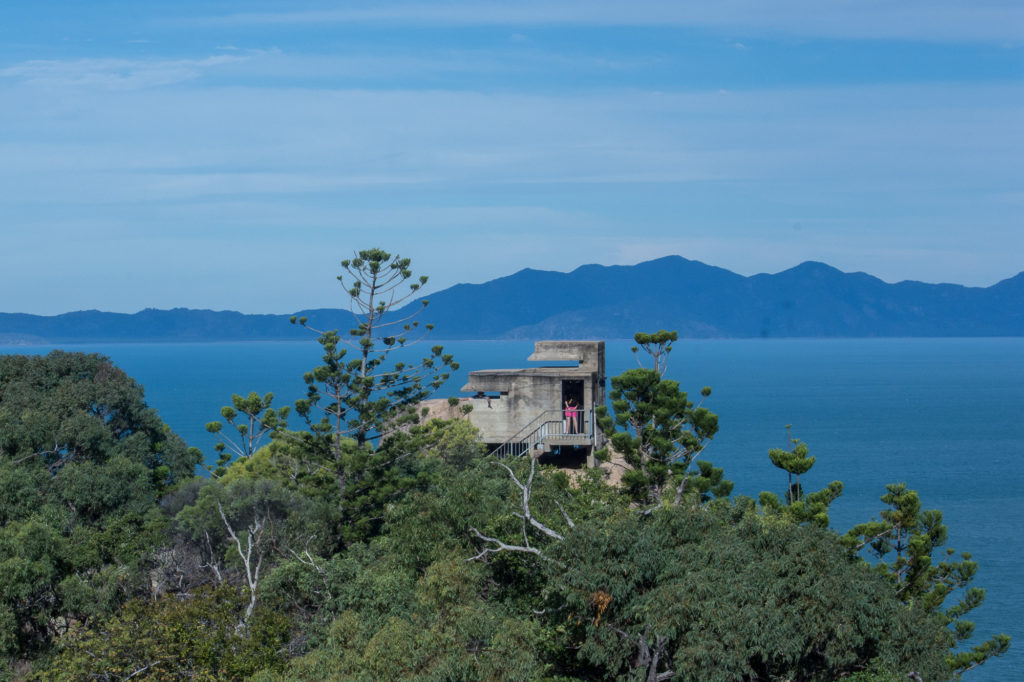
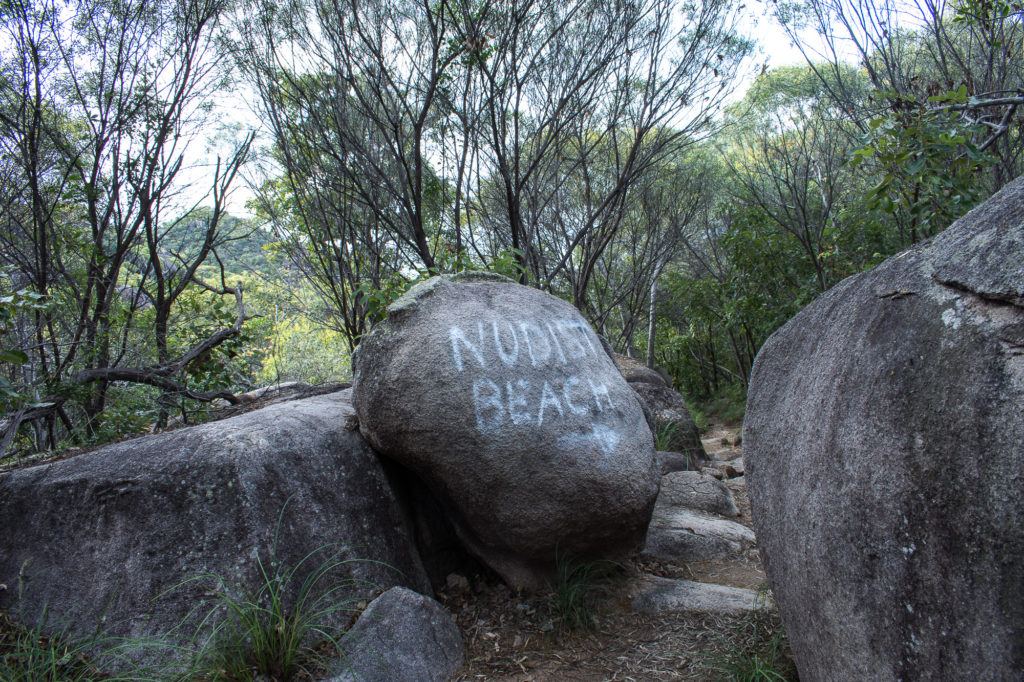
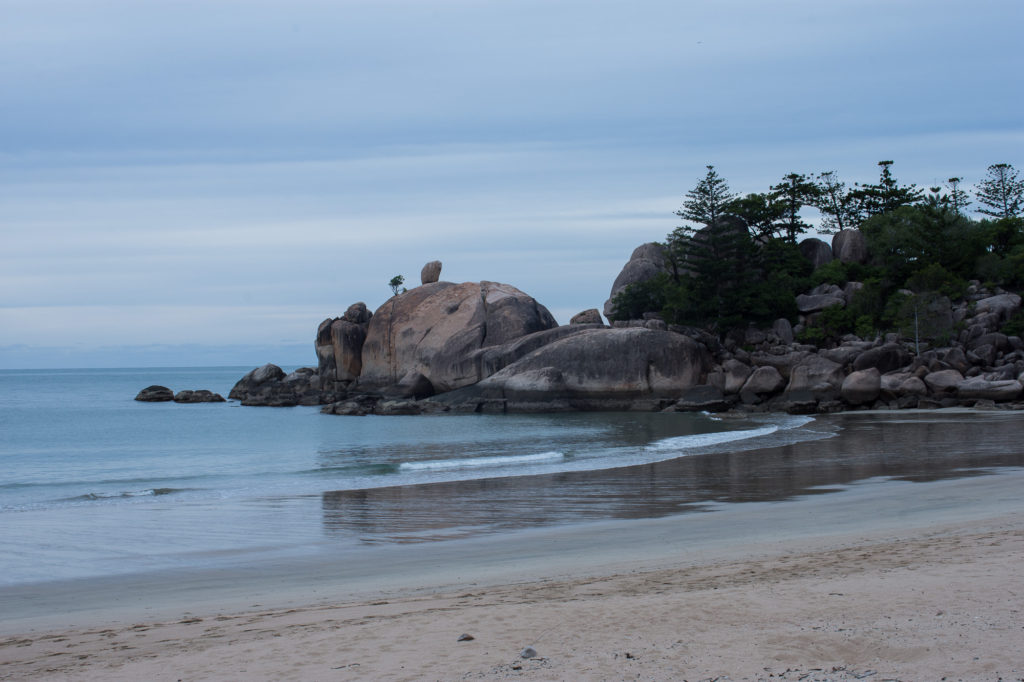
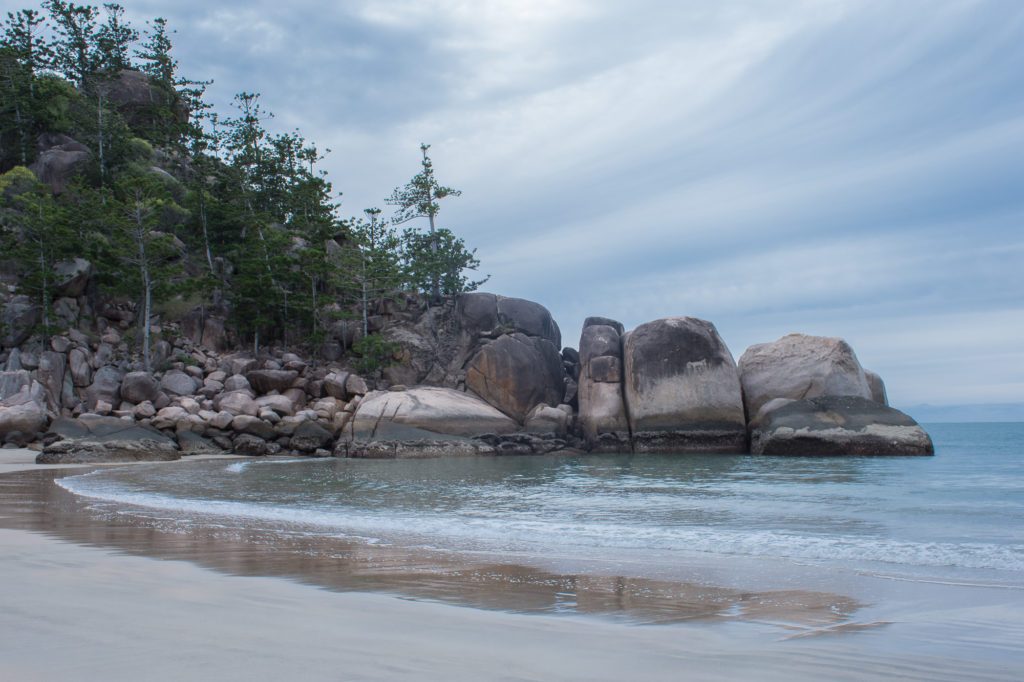
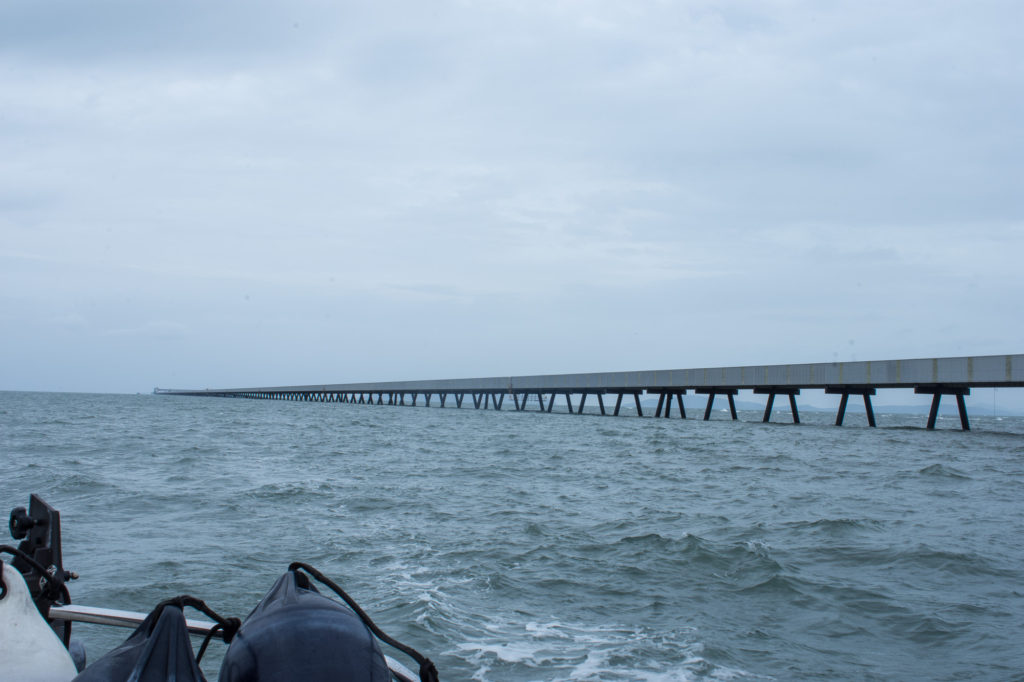
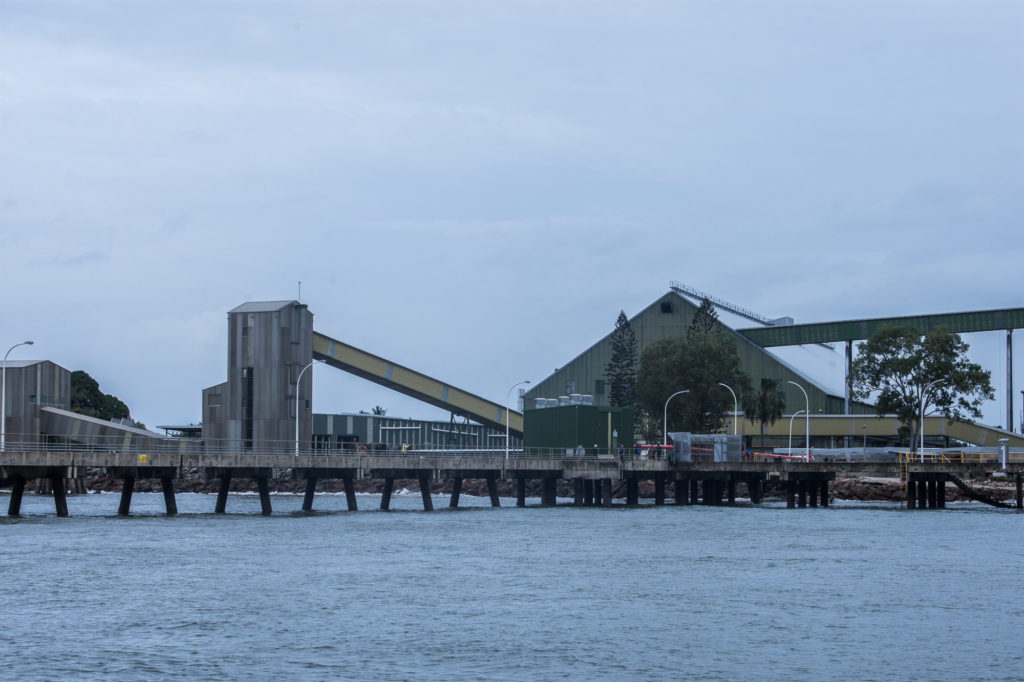
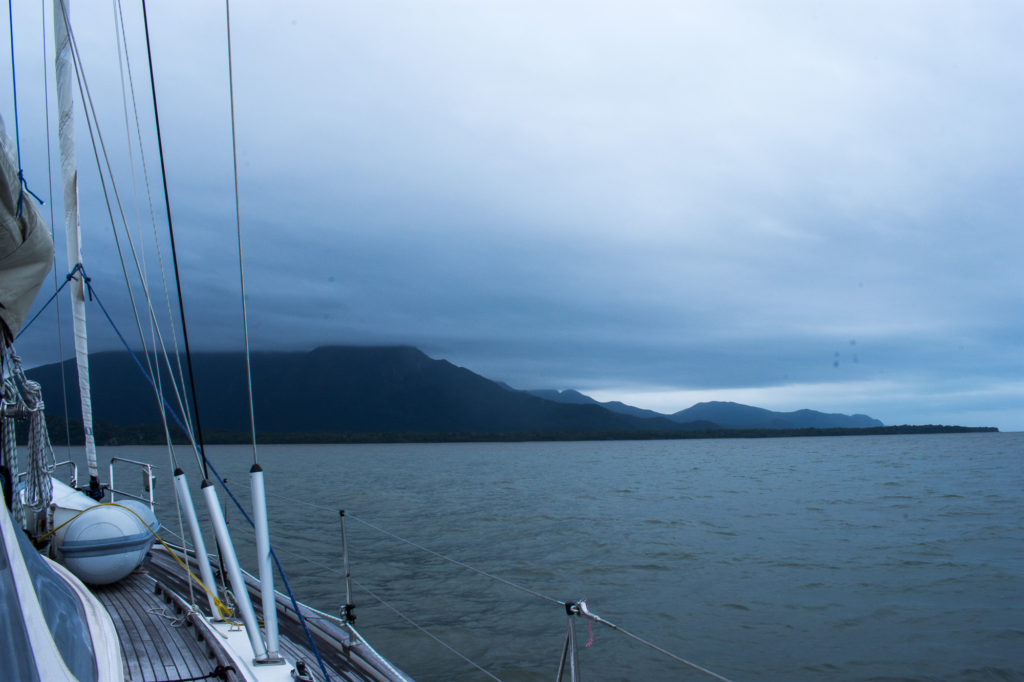
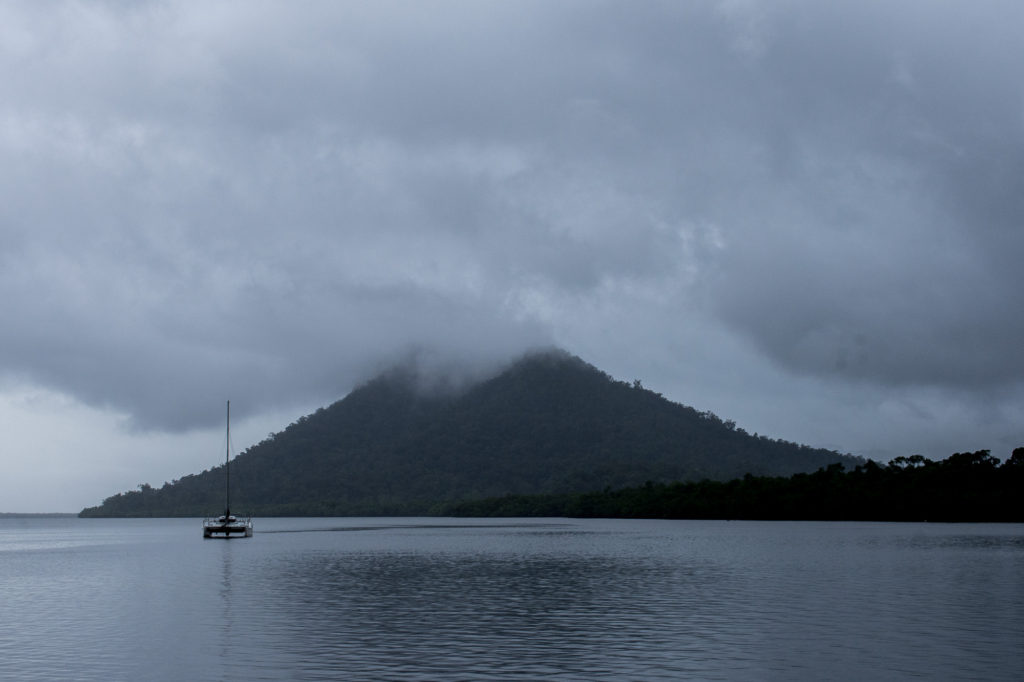
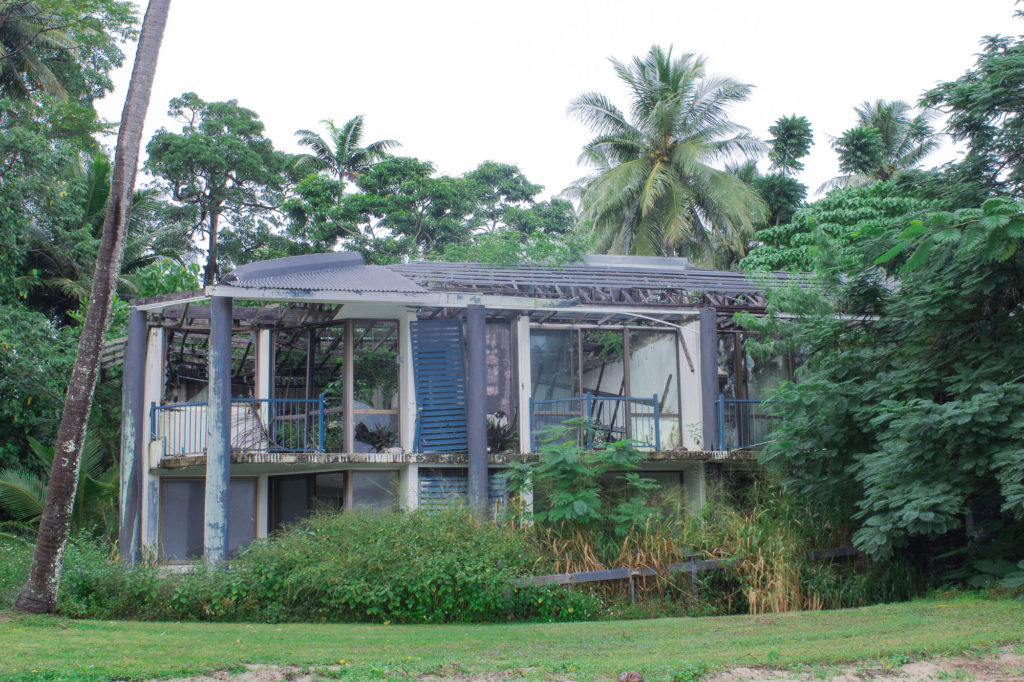
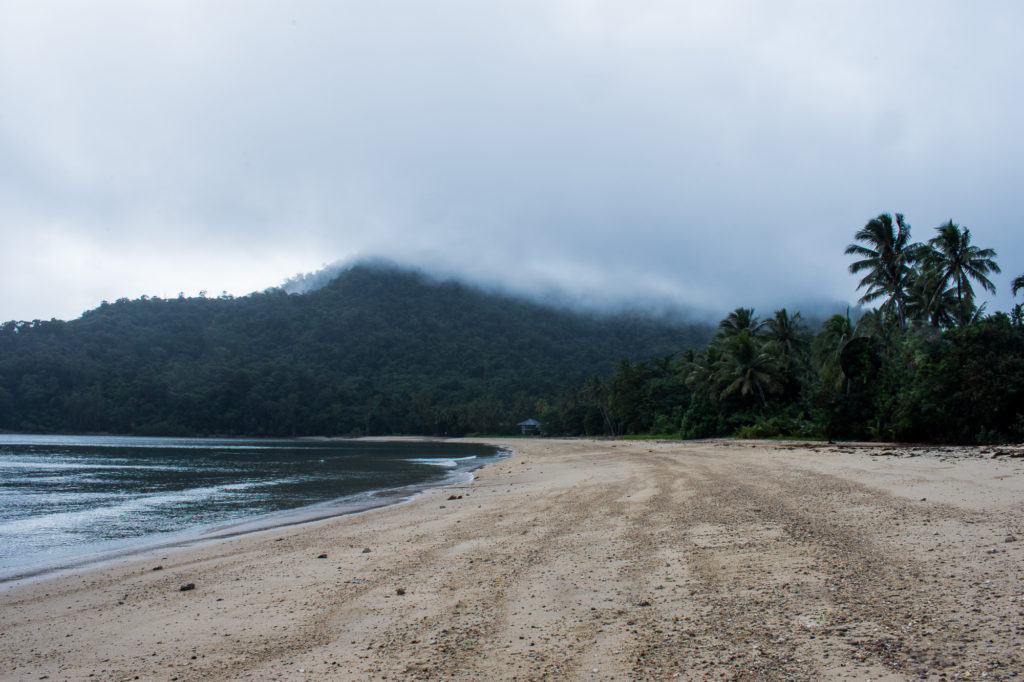
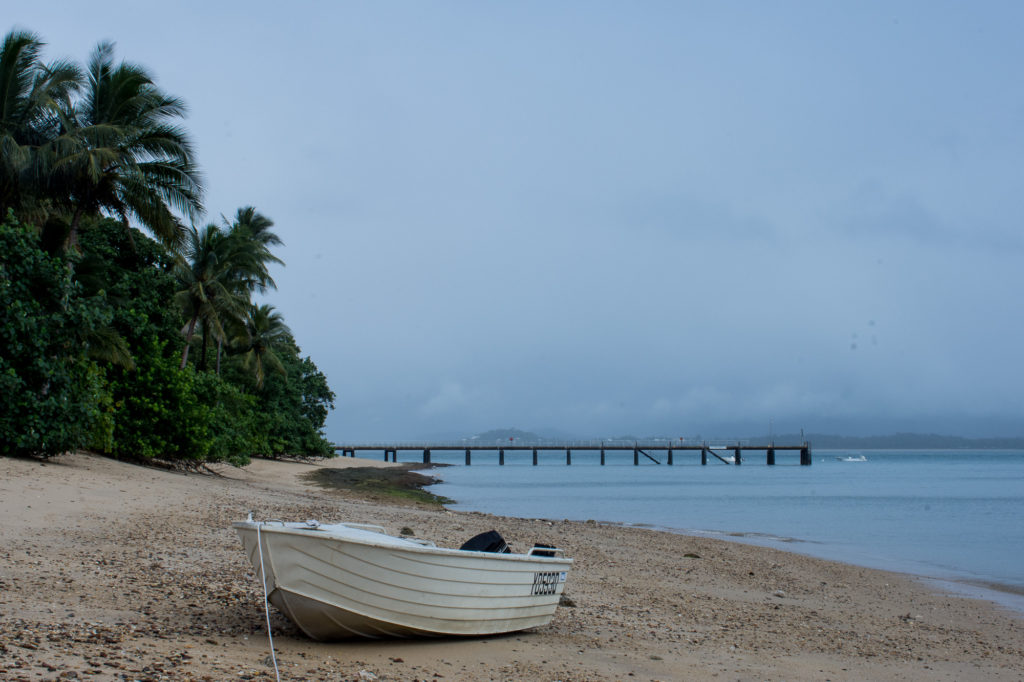
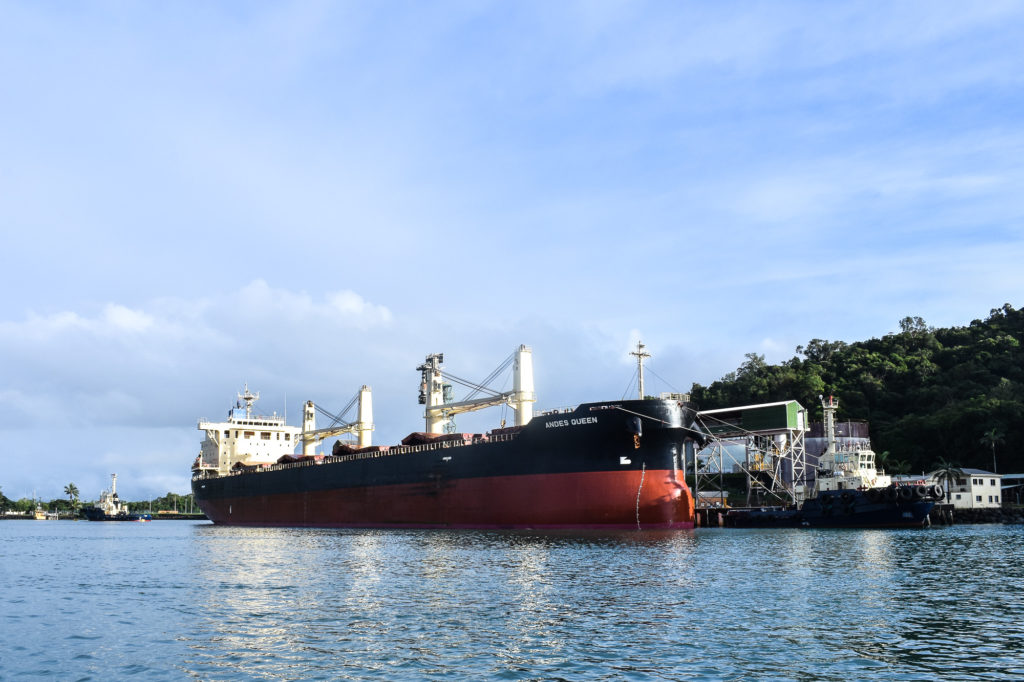
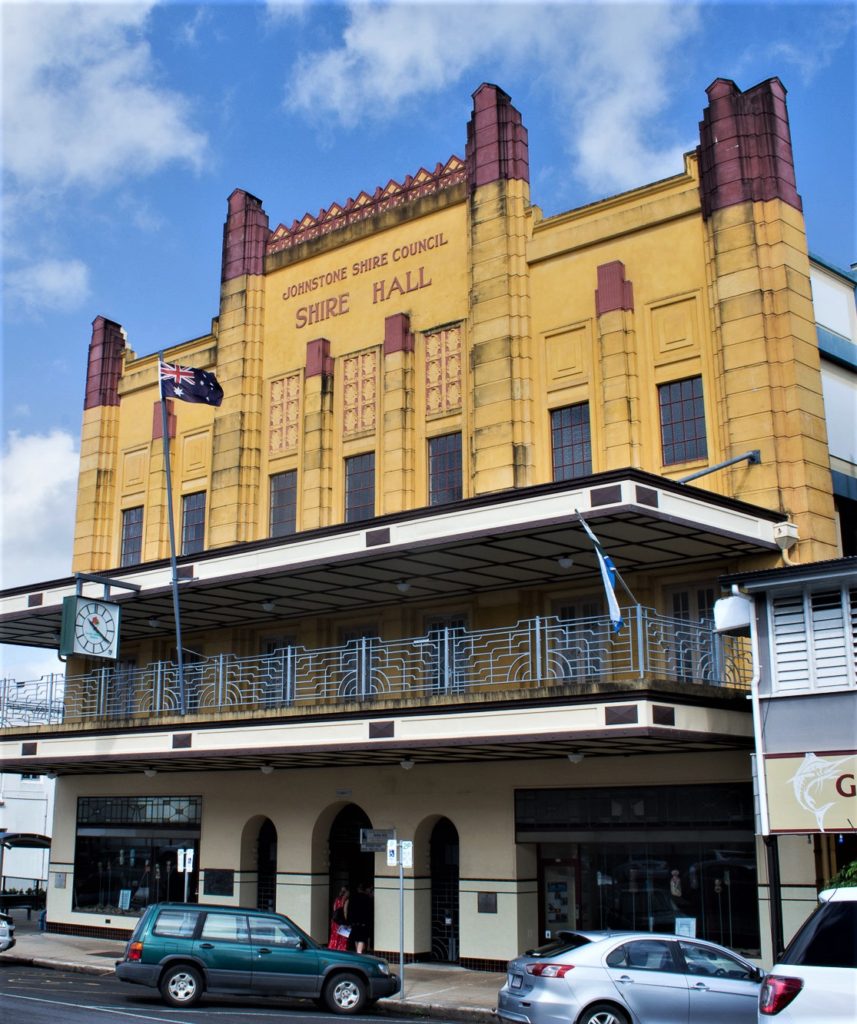
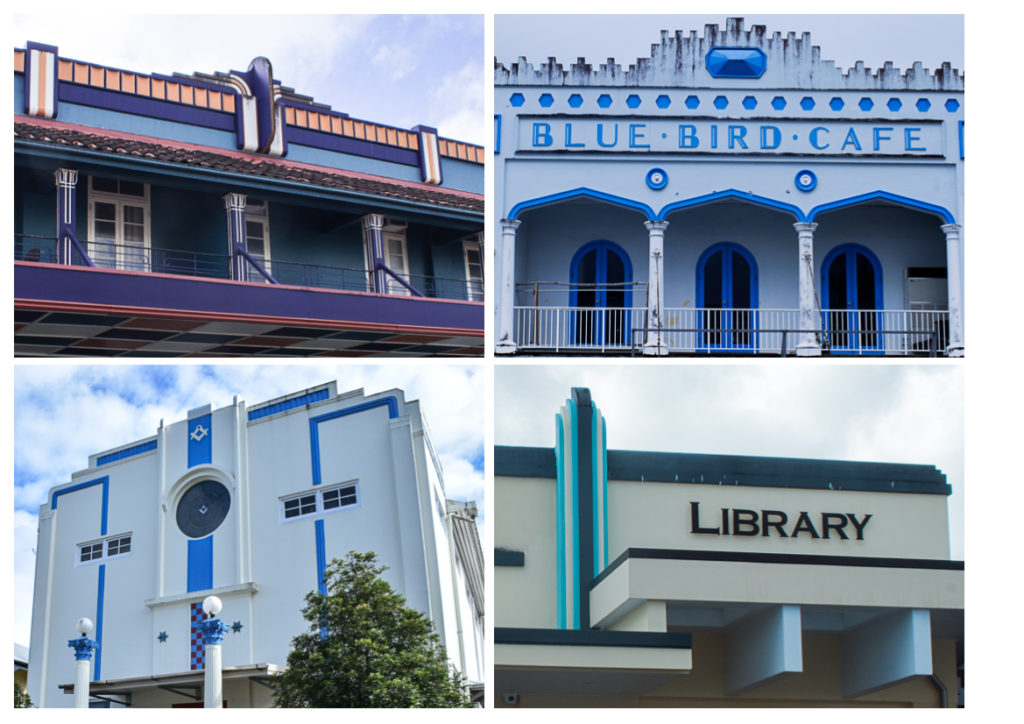
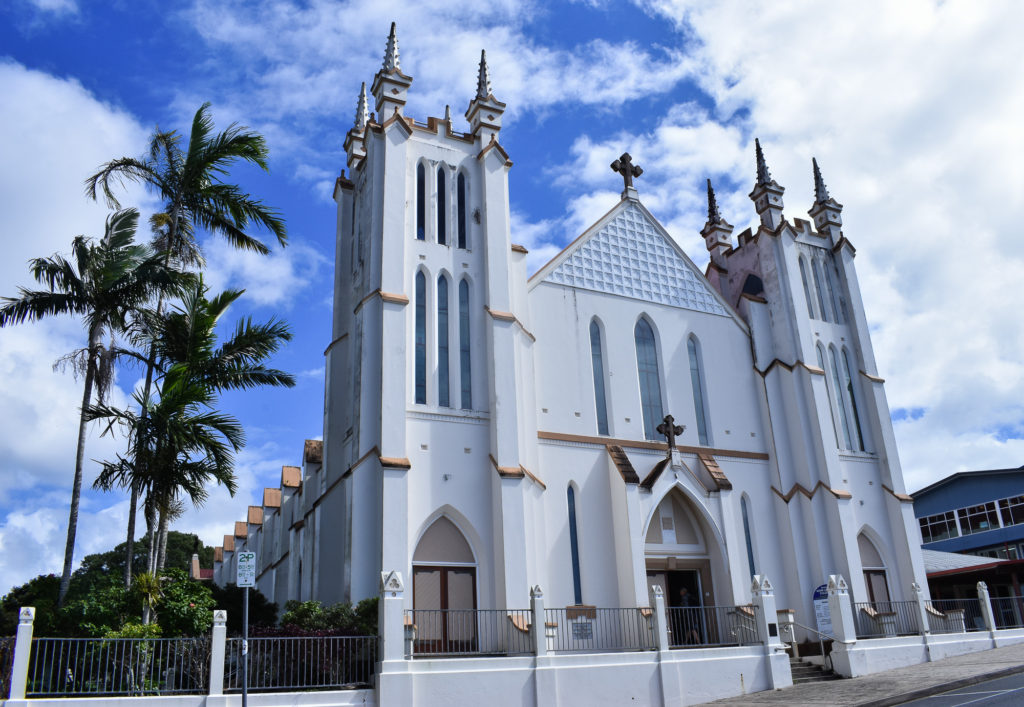
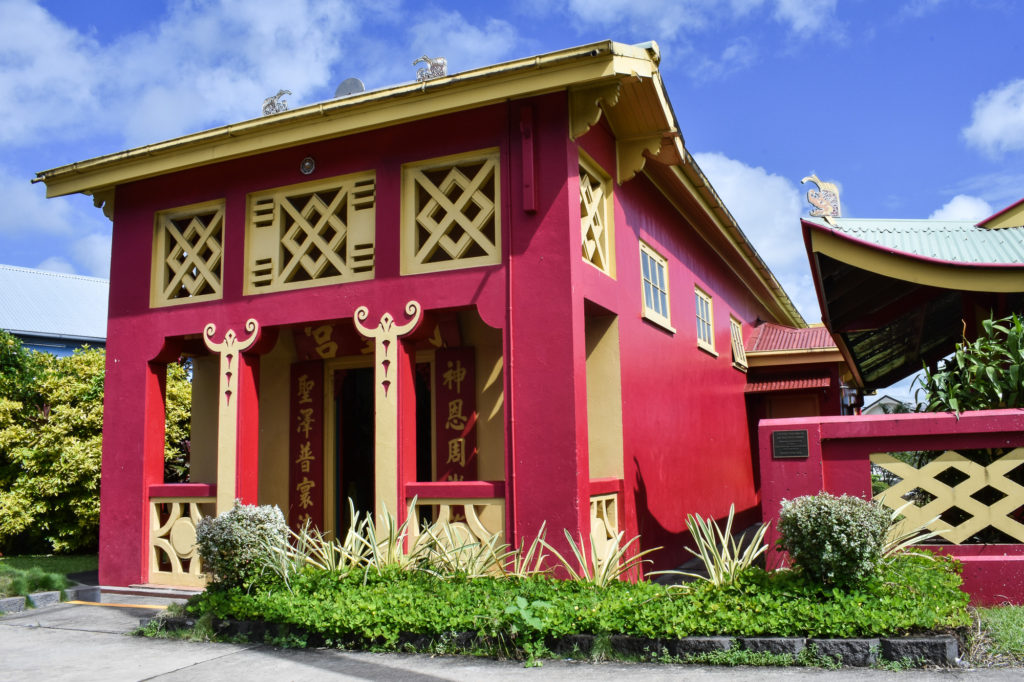
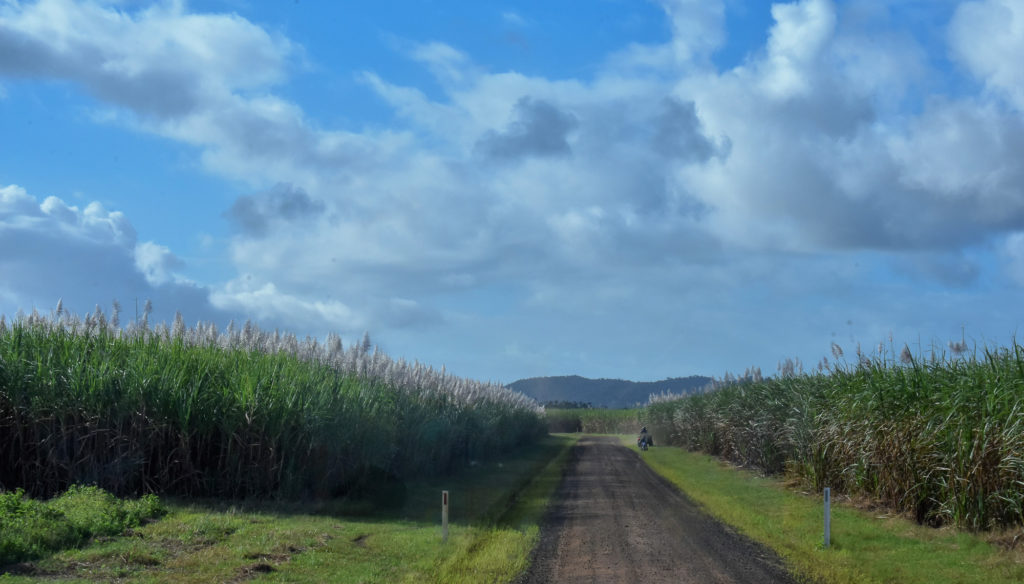
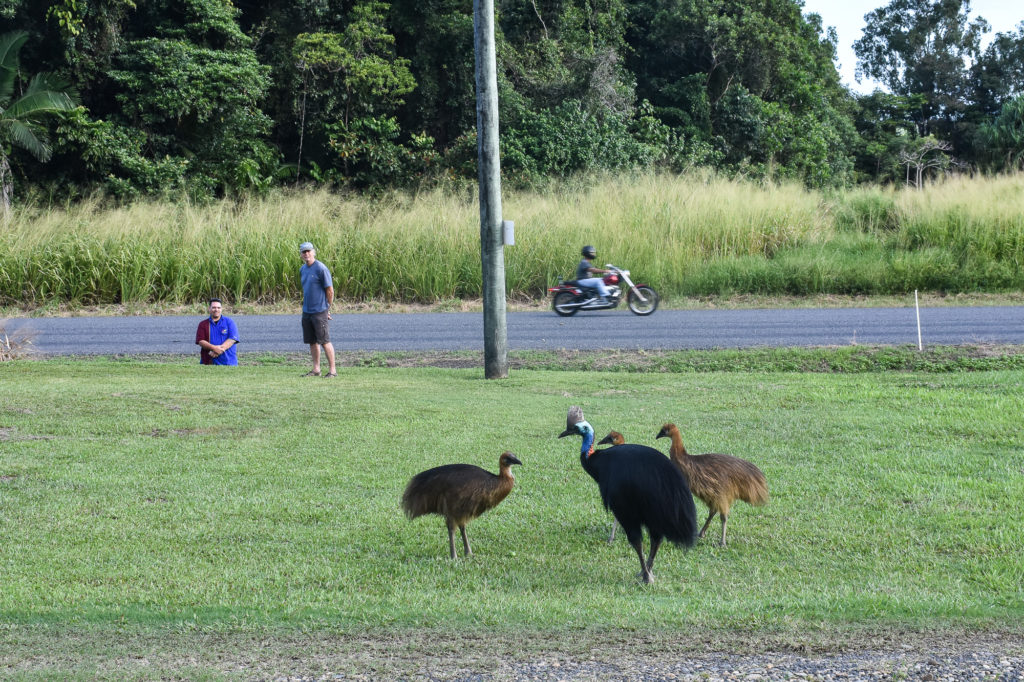
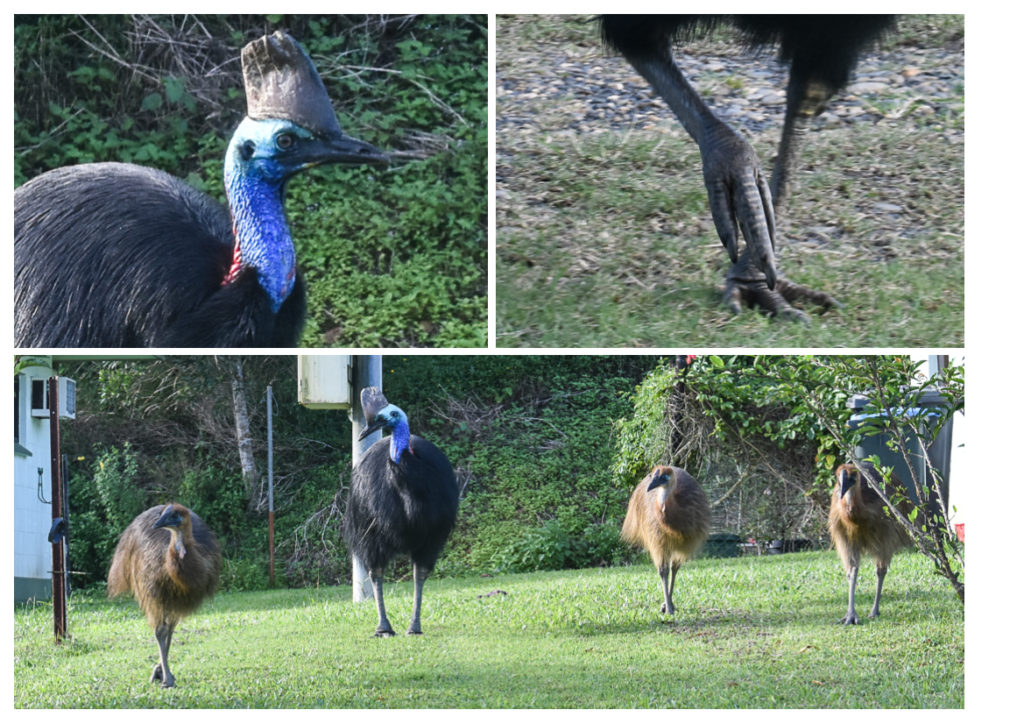
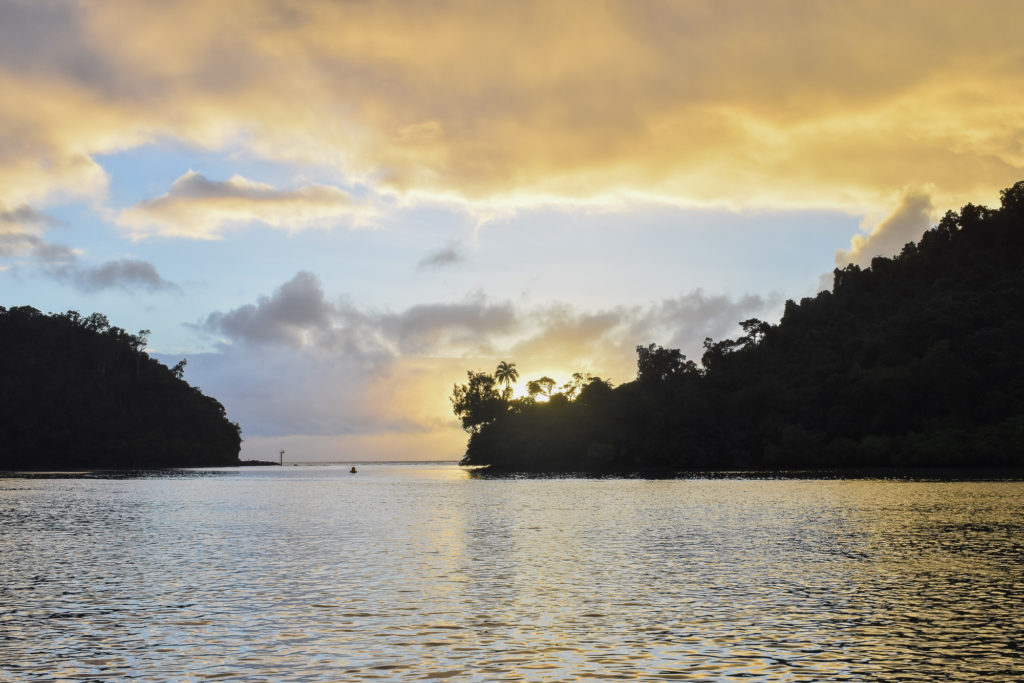
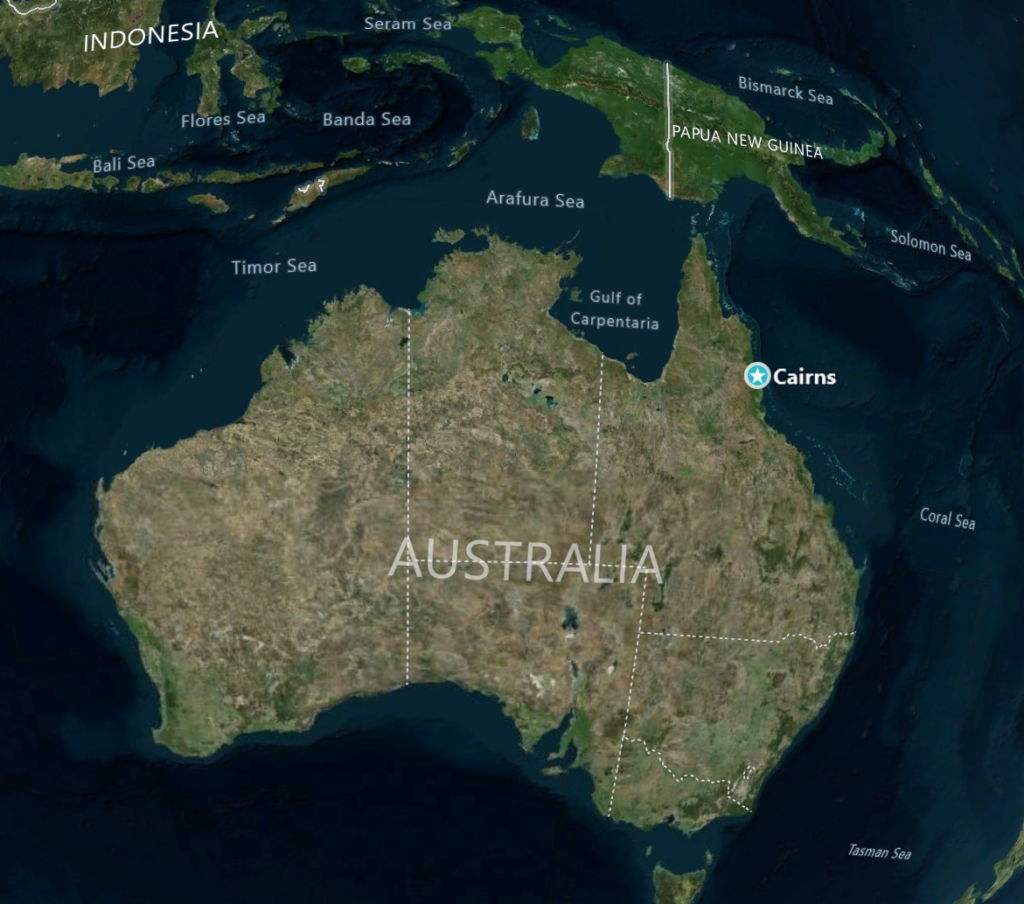
6 Comments
Gerard Smart
July 13, 2019 - 9:56 amI may not reply very often but I have read every single one of your posts – and a few of Hugh’s posts so long as they were non political.
Hope than one day you will turn it all into a book.
Gerard
annie
July 27, 2019 - 10:27 amThanks Gerard
It’s really nice to know you are reading the blogs. The plan is to do a photo book of them to remember the trip to look at in our dotage.
Hope you are both well
Annie x
Paul Bayley
July 15, 2019 - 7:41 pmAnother great read, after all your listings I think you could go on the after dinner speaker circuit. Hope you are making progress to your rally.
Paul
annie
July 27, 2019 - 10:30 amThank you Paul but don’t think I’d make a good speaker! Will get Hugh to do this.
We’re just leaving Thursday Island now for Indonesia. A perfect day so far…,..
Annie
Georgina Evans
July 19, 2019 - 5:29 pmAnnie, great to hear your news. It all sounds amazing, except the night sailing, saltwater crocs and the mozzies. They all sound less amazing…..
Take care, George
annie
July 27, 2019 - 10:34 amHi George
It sounds like you fully appreciate the joys and woes of this sailing lark.
We are now in Indonesia which is completely amazing.
Annie xxx